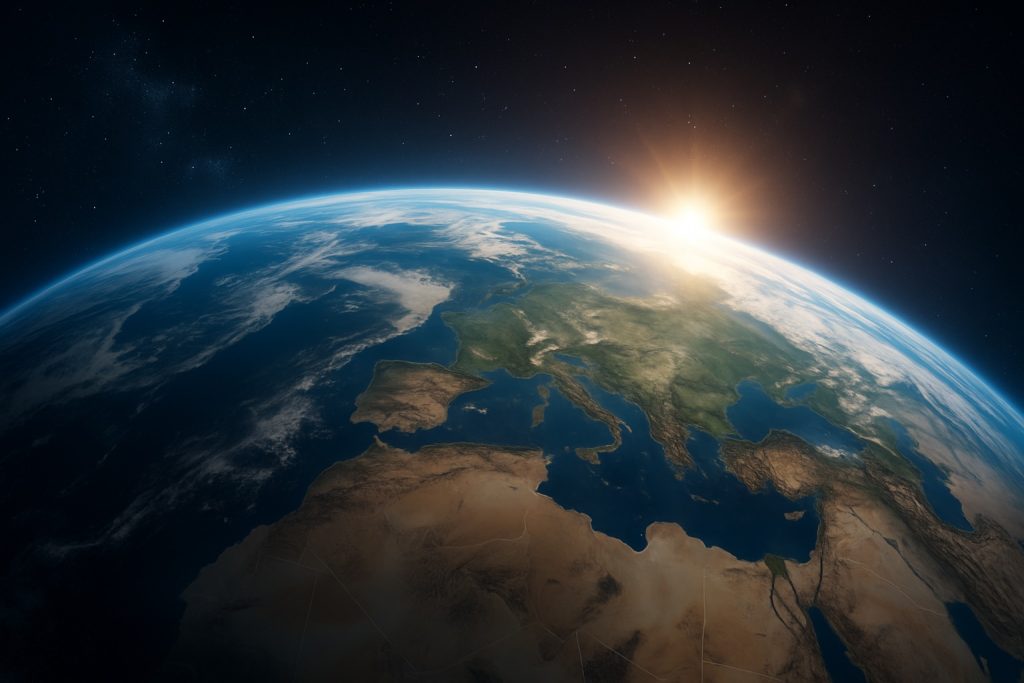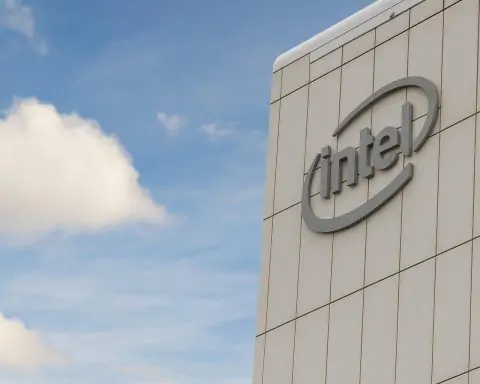- As of 2025, Chad has about 2.74 million internet users (13.2% of the population), with roughly 87% of Chadians still offline.
- There are about 14.5 million active mobile subscriptions in Chad (roughly 70% of the population) in 2025, with many people owning multiple SIM cards.
- Chad has just one Internet Exchange Point in N’Djamena, and as of 2025 about 33% of the country’s networks exchange traffic locally at DJAMIX.
- Fixed broadband is virtually non-existent in Chad, with zero fixed subscriptions and mobile networks providing the main internet access, where 2G covers about 85% of the population and 3G/4G only about 25%.
- Chad experienced a 24-hour internet outage in 2024 due to a disruption along the Cameroon link.
- In November 2024 Chad officially approved Starlink to operate, and by early 2025 Starlink said its broadband service was available in Chad with initial speeds up to 150 Mbps.
- Starlink is expected to cost about $50 per month with an upfront dish kit around $250, while the government aims for nationwide coverage by the end of 2025.
- The Chad Connection 2030 plan, announced around 2023–2025, seeks $30 billion in public/private investment from 2025 to 2030 to expand broadband and electrification and to drive 8% annual GDP growth.
- The World Bank’s Chad Digital Transformation Project (2024–2029) is a $92 million program to connect over 4.5 million rural people to broadband, build digital government platforms, and train about 40,000 people (including at least 25,000 women).
- The market is dominated by Airtel Chad and Moov Africa Chad, together accounting for about 99% of mobile subscribers, with Salam/Sotel Tchad providing only minimal 2G service, and ARCEP pursuing reforms to improve competition and service quality.
Chad, a vast landlocked nation in Central Africa, has one of the world’s lowest rates of internet connectivity. As of early 2025, only about 13% of Chadians use the internet, compared to a global average around 60% [1]. This places Chad near the bottom globally in internet access. The digital infrastructure is underdeveloped, and most citizens remain offline due to a mix of limited networks, high costs, and challenging geography. Yet change is on the horizon – from ambitious government initiatives to new satellite services promising to close the connectivity gap. This report provides a comprehensive overview of internet access in Chad, examining current penetration, infrastructure, affordability, mobile and broadband services, the advent of satellite internet (like Starlink), government ICT policies, key challenges, and emerging opportunities. Key indicators of Chad’s internet landscape include:
- Internet Users: ~2.74 million individuals (13.2% of the population) are online as of 2025 [2]. This is shockingly low – roughly 87% of Chadians still lack internet access, one of the highest offline populations in the world [3].
- Mobile Connections: ~14.5 million mobile subscriptions are active (about 70% of the population) [4], indicating many people own SIM cards (often multiple) even if they lack data service. Many of these connections are used for basic calls/SMS, with far fewer being internet-enabled.
- Social Media Use: Only ~1.68 million social media user accounts (8.1% of the population) exist in Chad [5], reflecting the limited internet penetration.
These headline numbers show the scale of Chad’s digital divide. In the sections below, we delve into why connectivity remains so scarce, how people who are online get access, what efforts are underway to improve the situation, and whether Chad may be on the cusp of an internet revolution.
National Internet Penetration and Infrastructure Overview
Chad’s internet penetration stands at just 12–13% of the population [6] – astonishingly low even by regional standards (the African average is ~39% online) [7]. This means roughly 7 out of 8 Chadians have no internet access at all. Most online users are concentrated in the capital N’Djamena and a few major towns. The country’s telecommunications infrastructure has historically been very limited:
- Late Fiber Connectivity: Chad only obtained access to international fiber optic bandwidth in 2012 [8]. Before that, connectivity relied on expensive satellite links. Even today, Chad lacks a robust nationwide fiber backbone – the fiber network is mostly a single route through Cameroon, with few domestic fiber links connecting cities [9]. This single “hub-and-spoke” route means if the link to Cameroon fails, the entire country can go offline (as happened during a 24-hour outage caused by a disruption in 2024) [10]. In fact, until recently one provider (Sudat Chad) handled virtually all international internet transit, a dangerous single point of failure [11].
- Minimal Fixed Broadband: Fixed broadband internet (e.g. via DSL, fiber to home, cable) is practically nonexistent in Chad. The World Bank recorded zero fixed broadband subscriptions in recent years [12]. In other words, <0.1% of people have a wired broadband connection at home – an unsurprising figure given the very poor landline infrastructure. The state-owned telco Sotel (branded as Sotel Tchad) provides some fixed lines and ADSL in N’Djamena, but coverage is tiny. The vast majority of internet access is via mobile networks, not fixed lines [13].
Chad’s few backbone infrastructure projects are supported by international partners. The World Bank’s Central African Backbone (CAB) initiative has helped extend some fiber through Chad, and the country is a party to the Trans-Saharan Fiber Optic Backbone project aiming to link Chad with Nigeria and Algeria [14] [15]. However, much of the country’s interior still relies on microwave links or satellite for backhaul. There is one Internet Exchange Point (IXP) in the capital (established with support from the Internet Society and African Union) to keep local traffic in-country [16] [17]. As of 2025, about 33% of Chad’s networks exchange traffic at this IXP [18], a start toward improving domestic routing. Overall, the physical infrastructure remains rudimentary, concentrated in cities and along a few routes, leaving vast rural areas completely unserved.
Mobile Networks: 2G, 3G, 4G – The Lifeline for Connectivity
Because fixed broadband is so scarce, mobile networks are the primary lifeline for internet connectivity in Chad. There are three mobile operators in the country [19]:
- Airtel Chad – a subsidiary of Bharti Airtel (India).
- Moov Africa Chad – formerly Tigo Chad, acquired by Maroc Telecom in 2019 [20]. (Millicom’s Tigo sold its Chadian operation to Maroc Telecom, which rebranded it as Moov Africa.)
- Salam (Sotel Tchad) – a small state-run operator, limited to 2G services [21].
Airtel and Moov dominate the market with about 99% of subscribers [22]. Salam’s 2G network is minimal and primarily offers basic voice/SMS, so it’s not a significant internet provider. The two major carriers have introduced 3G and even some 4G, but coverage is very limited:
- Coverage: Roughly 85% of the population is covered by basic GSM (2G) signal for calls/text [23]. However, only around 25% of the population is within 3G or 4G coverage [24] – essentially the urban and peri-urban areas. 4G/LTE exists only in a few major cities (like N’Djamena and maybe Moundou, Abéché) [25]. Rural and remote regions have no data coverage at all, and many highways between towns have large dead zones [26]. This leaves rural residents reliant on 2G at best, which supports only very slow GPRS/EDGE data if any.
- Network Quality: Even where 3G/4G is available, speeds tend to be slow and capacity constrained. In a recent survey, 86% of Chadian internet users described their internet connection as “slow”, with only 8% calling it fast [27]. Bandwidth in Chad is generally limited; outside a few fiber-connected businesses or NGOs, most connections (even “4G”) struggle with low megabit speeds. Uptime is also an issue, with frequent network outages due to technical faults or power cuts.
Mobile user growth has been steady but relatively modest. By 2025 there were ~14.5 million mobile SIMs in use [28], which is about 70% of the population – yet many people own multiple SIM cards to piece together coverage or take advantage of promotions. The unique mobile subscriber rate is likely much lower (perhaps around 40% of people), meaning many Chadians still have no cellphone at all. Maintaining mobile towers in Chad is costly and difficult: towers in remote areas run on diesel generators (because grid electricity is absent) and face harsh environmental conditions and occasional security risks [29]. These challenges have at times made the telecom business unattractive; in fact, both Airtel and Millicom reportedly considered exiting Chad due to low returns and regulatory difficulties around 2017–2018 [30]. Maroc Telecom’s entry in 2019 and a government call for a potential fourth operator were attempts to revitalize the sector [31].
Despite the hurdles, mobile networks remain Chad’s only viable path to mass internet access. Virtually all of the 2.7 million internet users are on mobile data. For the foreseeable future, expanding 3G/4G coverage and capacity will be critical to bringing more Chadians online, given the impracticality of fixed-line deployment in most areas. The government and regulator are encouraging upgrades – for example, both Airtel and Moov have rolled out 4G in the capital and are slowly extending it to secondary cities. However, reaching deep rural areas may not happen without alternative technologies (like satellite or community networks) due to low population density and high tower costs.
Availability and Affordability of Internet Services
Even where internet service is available in Chad, it often isn’t affordable for the average citizen. Chad consistently ranks among the most expensive places in the world for internet access. Several factors drive this: limited competition, costly international bandwidth, high taxes on telecom, and low economies of scale. The result is sky-high prices for data:
- Expensive Mobile Data: A 2021 global data pricing report found Chad to have the 5th most expensive mobile data in the world. The average price of 1 GB of mobile data in Chad was about $23.33 (USD) [32]. By comparison, 1 GB costs well under $1 in many other African countries. To put this into income terms, 1 GB of data cost over 20% of the average Chadian’s monthly income as of a few years ago [33] – an astronomical burden. (For context, the UN affordability target is 1 GB for no more than 2% of monthly income [34].) In short, mobile internet in Chad is a luxury that only the relatively wealthy can regularly afford. A typical bundles – for example, 1.5 GB of data on Airtel or Moov – might cost around 5,000 CFA (~$8), in a country where many earn only a few dollars per day.
- High Broadband Costs: For the few with access to fixed broadband, prices are similarly prohibitive. An unlimited home broadband plan (via satellite or ADSL in N’Djamena) can cost the equivalent of hundreds of US dollars per month – out of reach for anyone but large businesses or NGOs. For instance, a 60 Mbps unlimited connection was listed around 250,000 CFA (~$415) per month in 2025 [35]. Such costs explain why fixed subscriptions are essentially zero for the general population.
- Device and Electricity Barriers: Beyond service tariffs, owning an internet-capable device is itself a barrier. Smartphones are relatively expensive in Chad and less than half the population has one. Many people rely on basic phones that can’t use the internet. Additionally, only ~12% of Chadians have access to electricity [36], and in rural areas less than 5% have power at home [37]. This means charging a phone is a challenge in villages – people often must pay to charge devices using car batteries or solar kiosks. The lack of reliable electricity also raises operating costs for ISPs (who run generators constantly) and limits the practicality of internet use outside daytime hours.
The Alliance for Affordable Internet (A4AI) has noted that Chad, the DRC and CAR are among the worst-case scenarios for affordability, where basic connectivity remains “unaffordable for all but the wealthy few.” In these countries a low-consumption data package can consume more than 20% of monthly income, far above global norms [38]. The high cost is a major reason the majority of Chadians stay offline even when coverage is technically available. Many citizens must carefully ration their data – for example, using text-only services or accessing the web just a few times a month. Students and low-income users often rely on public Wi-Fi (where available at universities or internet cafés) or free basics when offered.
On a positive note, there have been small improvements. Regional data costs have trended downward and Chad has seen some price cuts in recent years. The average cost of 1 GB may have dipped slightly from its peak, and operators occasionally run promotions (like social media bundles) to attract users. But as of 2024, Chad was still the 2nd least-connected country in the world after Burundi, with roughly 86.8% of people offline [39]. Bridging this affordability gap will require not just infrastructure, but targeted policies (such as reducing sector taxes or encouraging price competition) to lower the cost barrier.
Satellite Internet: Starlink and the Promise of Remote Coverage
In a bid to leapfrog Chad’s connectivity challenges, the government has turned to satellite internet as a game-changer. In November 2024, Chad officially approved Elon Musk’s Starlink satellite service to operate in the country [40]. By early 2025, Starlink announced its broadband service was “now available in Chad” [41], marking a new era for the nation’s internet access.
Starlink is a network of low-Earth orbit satellites that can beam high-speed internet to user terminals virtually anywhere – crucial for a country like Chad, where vast areas have no fiber or cellular data coverage. The Communications Minister, Boukar Michel, said the government had been in talks with SpaceX since 2021 and “managed to agree on the essentials”. “A large part of our territory is not covered by fibre optics, and I believe that Starlink will help us bridge this gap,” Minister Michel told Reuters [42] [43]. Officials see satellite broadband as a way to quickly extend connectivity to remote provinces, connect government services in far-flung districts, and support innovation by giving entrepreneurs internet access anywhere in the country.
Early signs are promising. Initial Starlink test units in Chad have demonstrated download speeds up to 150 Mbps [44] – a dramatic improvement compared to sub-1 Mbps speeds common in rural 2G/3G areas. The service does not rely on Chad’s fragile national backbone, instead linking directly to satellites, which could make internet access in Chad more resilient to terrestrial outages. The government in partnership with SpaceX plans for Starlink coverage to be nationwide by the end of 2025 [45]. Some observers estimate that with Starlink’s rollout, internet penetration in Chad could jump from ~11% to 40% by 2026 (reaching “millions of people who previously lacked reliable internet”) [46]. Such an increase would be revolutionary, potentially moving Chad out of the digital basement for the first time.
However, there are significant caveats. Cost remains a barrier: Starlink’s monthly subscription in Chad is expected to be around USD $50, with an up-front equipment cost of about $250 for the dish kit [47]. While this is somewhat competitive with existing high-end internet offerings (and far cheaper per megabit than legacy satellite links), it is still an enormous expense for ordinary Chadians. $50 a month is beyond the entire income of many households. The government is looking at ways to make Starlink more accessible – for instance, by connecting schools, community centers, and clinics with shared terminals, or exploring subsidies. Power supply is another issue: Starlink terminals need electricity, so deploying them in off-grid villages requires solar panels and batteries (as shown in the image above). These add to the setup cost and complexity.
Local telecom operators have responded warily to Starlink’s arrival. The entry of a global satellite ISP introduces new competition for Airtel and Moov, especially for lucrative corporate and NGO customers who might switch to Starlink for better speeds. Moov Africa (Maroc Telecom) commented that Starlink could “affect local operators” by siphoning off high-end users and forcing price competition [48]. There are also regulatory considerations – Chad will need to integrate Starlink into its licensing and tax framework so it’s a level playing field with terrestrial providers (for example, Safaricom in Kenya has argued that satellite providers should partner with local telcos or face the same regulations [49]).
Despite these challenges, the potential impact of Starlink is immense. It can connect regions that might otherwise wait years for fiber or cell towers. This means opportunities for e-learning, telehealth, e-commerce and more in Chad’s rural communities. For instance, schools in remote eastern Chad could get online educational resources via satellite; farmers could access market information; and tech start-ups could emerge outside the capital. The government has highlighted that better internet access will enable digital public services in remote areas and boost tech entrepreneurship [50]. In short, satellite internet is seen as a catalyst to finally break Chad’s isolation. If implementation is successful and costs can be managed, Starlink and similar services (e.g. OneWeb or others in future) could rapidly shrink Chad’s digital divide – turning the “digital desert” into a more connected society. The coming 1–2 years will be crucial to see how widely Starlink is adopted and whether it truly sparks an internet revolution for Chad’s populace.
Government Policies, Regulation, and ICT Initiatives
The Chadian government’s approach to ICT has been a mix of ambitious development plans and heavy-handed controls. On one hand, authorities recognize the importance of digital connectivity for economic and social development, and have recently launched major initiatives to modernize the sector. On the other hand, the government has a track record of internet censorship and regulatory bottlenecks that have, at times, stifled ICT growth. Here we explore both facets:
Digital Development Plans: In 2023–2025, Chad’s leadership put digital transformation high on the national agenda. The country’s new national development roadmap – tellingly named “Chad Connection 2030” – seeks massive investment in ICT infrastructure. The plan calls for $30 billion in public/private investment over 2025–2030 focusing on sectors including digitalization and infrastructure [51]. It is backed by international partners like the IMF and World Bank [52]. The goal is to spur economic growth of 8% annually through 2030 by improving connectivity, among other development goals [53]. This high-level commitment signals that the government sees internet access as key to future prosperity. Concrete actions under this strategy include expanding broadband networks, improving electrification (critical for ICT), and enabling e-government services.
Regulatory Reforms and Infrastructure Projects: In mid-2025, the government announced a strategic reform package to strengthen digital infrastructure and reduce reliance on a single international link [54] [55]. A centerpiece of these reforms is establishing Internet Exchange Points (IXPs) in multiple cities (beyond just the capital) to keep local data local and improve network efficiency [56]. Additionally, the government is actively pursuing redundant international fiber routes by connecting with more neighbors – plans are underway for new fiber links via Libya, Algeria, and Nigeria [57]. By diversifying away from the Cameroon route, Chad aims to greatly enhance its internet resilience and achieve greater “digital sovereignty” [58] [59]. These efforts respond to the painful lessons of past outages and the country’s low resilience score (Chad ranks in the bottom 10 in Africa for internet resilience) [60] [61]. The telecom regulator, ARCEP (Autorité de Régulation des Communications Électroniques et des Postes), has also been updating legal frameworks – for example, simplifying licensing for new services and looking at quality-of-service enforcement to push operators to improve coverage.
Public Sector and Donor Programs: The government is partnering with international donors on ICT projects to expand access and skills. Notably, the World Bank’s Chad Digital Transformation Project (launched late 2024) is a five-year, $92 million program to expand affordable broadband and e-government [62]. This project will connect over 4.5 million people in rural areas to broadband (through a mix of fiber, microwave, and satellite solutions) and build digital government platforms for services like e-ID, e-health, and digital payments [63]. Crucially, it also focuses on digital skills training – targeting 40,000 Chadians (with at least 25,000 women and girls, plus youth and people with disabilities) to receive training that will improve their ability to use the internet productively [64]. Such capacity-building is critical in a country where digital literacy is low. Other initiatives include setting up “digital community centers” in some towns, with support from organizations like the ITU and UNDP, where people can access computers, the internet, and training. For example, a solar-powered community internet café was piloted in N’Djamena to serve low-income users [65]. The government has also begun integrating ICT in education: partnering with NGOs (like War Child’s “Can’t Wait to Learn” program) to use tablets and offline e-learning for children in refugee camps and remote schools [66] [67]. These efforts, while modest so far, indicate an understanding that human capital is as important as cables and towers.
Regulatory Environment and Challenges: Despite progressive plans, Chad’s regulatory environment has had its turbulent side. The government has a history of using internet disruptions as a political tool. Most infamously, starting in March 2018, authorities imposed a social media blackout that lasted over a year – the longest ever recorded in Africa [68]. Access to platforms like Facebook, WhatsApp and Twitter was cut off following protests against constitutional changes, in an attempt to prevent mobilization against then-President Idriss Déby [69] [70]. The blackout extended well into 2019; courts in Chad even justified it on grounds of “security threats” from social media [71]. This draconian measure highlighted the government’s tight control over cyberspace. Again in mid-2020, during a period of unrest, the government ordered a 48-day internet shutdown – throttling or completely blocking social media and messaging apps for all users [72] [73]. The state regulator ARCEP instructed mobile operators to implement these restrictions, following directives from the Ministry of Public Security [74]. Such actions have seriously impeded freedom of expression and undermined confidence in the reliability of internet service. As of 2021 and 2022, there were further reports of intermittent blocking or slowing of communications around sensitive political events (for instance, around election times or protests when the military transitional government faced opposition). While the current authorities have pledged to avoid blanket shutdowns, digital rights remain fragile in Chad. The legal framework still allows the government broad leeway to censor or cut access under vague “national security” provisions.
On the regulatory front, another challenge has been the financial instability of the sector. The government in past years imposed hefty taxes on telecom revenue (a 9% telecom services tax introduced in 2018) [75], which telecom companies argue limited their ability to invest and also pushed up consumer prices. However, to its credit, the government has shown willingness to attract investment – for example, by inviting a new operator (though a fourth license tender in 2018 did not yield a successful bidder) [76]. Also, the Starlink licensing in 2024 demonstrates openness to new technology. Balancing state control with a liberalized market will be important: the presence of only two major operators constitutes an effective duopoly, and Internet Society rates the choice of ISPs in Chad as “very poor” due to this lack of competition [77]. Encouraging more competition (or at least regulating prices) could help with affordability issues mentioned earlier.
In summary, the government’s ICT stance is at a crossroads. There is strong momentum toward digital expansion – clear in strategic plans and partnerships – but also a need for governance reform to ensure the internet remains open, affordable, and resilient. The coming years will test whether policies like Chad Connection 2030 and the Digital Transformation Project can translate into real improvements on the ground and whether the state will refrain from crippling the network for political purposes. If successful, Chad’s policy efforts could pave the way for a more inclusive digital economy; if not, the country risks remaining a digital laggard.
Key Challenges: Power, Geography, and Stability
Chad’s internet challenges go beyond just cables and code – they are deeply intertwined with the country’s physical environment and socio-political context. Here are some of the major hurdles that continue to impede internet access:
- Electrical Power Deficit: Simply put, no power means no internet. Chad has one of the world’s lowest electrification rates. As of 2019, only 8% of the population had access to electricity (urban 20%, rural a shockingly low 1%) [78]. By 2023, access had only inched up to around 10–12% [79]. Vast swathes of the country are off-grid. This creates a cascade of problems: telecom towers must run on diesel generators (driving up operating costs and causing downtime when fuel runs out or engines fail), network equipment like routers cannot be reliably powered outside cities, and consumers cannot easily charge phones or computers. In villages, people often travel miles or pay significant fees just to charge a handset. The power issue also makes it hard to keep any IT infrastructure running – data centers, ISPs, and even the new local IXP require backup generators. Until Chad can improve electricity access (the government has set a target of 20% rural electrification by 2030 [80], which is still low), the internet will remain literally in the dark for much of the population.
- Geographic Spread and Low Population Density: Chad is Africa’s fifth-largest country by area (over 1.28 million km²), but its population is only ~17–20 million, and heavily concentrated in the south and around N’Djamena. The north is Sahara Desert with very sparse settlements. This geography means providing nationwide coverage is extremely challenging and costly – there are huge distances between towns, and many remote communities might have only a few thousand inhabitants (or nomadic populations), which is not economical for traditional network build-out. Laying fiber or building cell towers across deserts, mountains, and swamps (in the south) is a massive infrastructure undertaking. Even main roads lack connectivity for hundreds of kilometers. The Central African Backbone fiber has helped link the capital to the submarine cable landing in Cameroon, but extending branches to all provinces is a slow process. Remote areas near the borders with Sudan, Niger, Libya, and CAR are particularly isolated. Satellite solutions (like Starlink or traditional VSAT) can mitigate this, but again at high cost. The geographic factor ensures that, without innovative approaches, many rural Chadians will remain hard to reach.
- Poverty and Economic Constraints: Chad is among the world’s poorest countries, and poverty sharply limits both consumer ability to pay and government ability to invest. Over 40% of Chadians live below the poverty line [81], and the country consistently ranks near the bottom of the Human Development Index. This means even if infrastructure is available, people may not afford devices or data plans (as discussed in affordability). It also means the government has a thin tax base and competing priorities (health, education, security) that often relegate ICT investment. That said, the discovery of oil in Chad boosted government revenues in the 2000s, some of which have been directed to telecom infrastructure – but oil volatility and debt issues have constrained public spending. The digital divide in Chad is as much economic as it is technological, with wealthier urban elites enjoying far better connectivity than the rural poor.
- Political Instability and Conflict: Chad has faced decades of political turmoil, including rebellions, regime changes, and regional conflicts. The uncertainty and risk can deter long-term investment in infrastructure. For example, after the sudden death of President Idriss Déby in 2021, the country went through a tumultuous transition which saw protests and violence – during such times, telecom expansion projects often stall, and indeed the government resorted to internet blackouts as noted. Additionally, conflict in neighboring countries (Sudan’s recent war, CAR’s instability, Boko Haram in Nigeria) spills over with refugee flows and security tensions in border regions, making it harder to maintain telecom links there. Parts of Chad, especially the Lake Chad region, have security restrictions that can limit where companies deploy cell towers (for fear of them being attacked or misused). Until Chad achieves more stable governance and security, these factors will continue to pose challenges to consistent internet rollout.
- Government Censorship and Service Disruptions: As discussed, the intentional shutdowns of internet by authorities are a serious challenge. They undermine user trust (people invest less in internet services if they fear they can be turned off arbitrarily) and hurt businesses that rely on connectivity. The 16-month social media ban in 2018–2019 and the 2020 nationwide throttling not only stifled free expression but also cost the economy (e.g. e-commerce and tech services lost revenue when they couldn’t operate) [82] [83]. While in recent times the government has preferred throttling (slowing) to complete shutdowns, the threat of censorship is a cloud over Chad’s digital environment. Overcoming this will require legal reforms and greater respect for digital rights – a slow process that depends on broader democratic progress.
- Human Capital and Digital Literacy: With a literacy rate of only around 32% (for adult females even lower), Chad’s population faces basic educational barriers to internet use. Many people, especially in rural areas, are not familiar with computers or the wider internet beyond simple mobile phone functions. There are over 120 local languages spoken in Chad, and most online content is in French or Arabic (Chad’s official languages), so language can be a barrier for some. Without substantial investment in digital literacy and locally relevant content, simply providing access may not yield the full benefits. The government and NGOs have begun some programs to train youths in ICT and promote local tech content (like apps in local languages), but it’s at an embryonic stage. Brain drain is another issue: talented IT professionals often leave for opportunities abroad, leaving a shortage of expertise to run and expand domestic internet services.
Each of these challenges is formidable on its own; in combination, they explain why Chad’s internet development has lagged behind much of the world. Nonetheless, none are insurmountable. The power deficit can be addressed with off-grid renewable solutions (solar farms, etc.), geographic hurdles can be bypassed with satellites and clever infrastructure sharing, and political will can change with leadership commitment. The next section looks at how recent opportunities and partnerships are trying to tackle these barriers, offering hope that Chad’s connectivity can improve despite the challenges.
Opportunities for Digital Expansion and International Partnerships
Amid the difficulties, there are several bright spots and opportunities that could significantly improve internet access in Chad over the coming years. Both the Chadian government and international partners are actively investing in the country’s digital future. Here are some key opportunities and initiatives:
- Major International Funding and Projects: As mentioned, the World Bank’s Digital Transformation Project (2024–2029) is injecting substantial resources into Chad’s ICT sector [84] [85]. By extending broadband to millions in rural areas and building digital government systems, this project will lay foundational infrastructure. It also emphasizes inclusion – training women, youth, and marginalized groups in digital skills so they can actually use the new connectivity [86]. In addition to the World Bank, other institutions like the African Development Bank (AfDB) and the ITU are supporting Chad. For example, the AfDB has previously funded fiber-optic links under the Central African Backbone. There is also technical assistance flowing in: experts are helping Chad modernize its telecom laws, set up things like computer emergency response teams (for cybersecurity), and develop a national broadband plan. These partnerships bring not just money but expertise and technology transfer, helping Chad leapfrog where possible.
- Regional Integration and Fiber Corridors: Chad’s participation in regional connectivity projects is a game-changer. The Trans-Saharan Fiber Optic Backbone (TSFOB) is a multi-country project to run high-capacity fiber from the Mediterranean coast (Algeria) down through Niger to Nigeria, with branches to Chad and Mali. By plugging into this, Chad could gain a second major route to global internet hubs (bypassing its dependency on the undersea cable via Cameroon) [87]. Similarly, a link north to Libya could connect Chad into networks that go to Europe via the Mediterranean. These diversified routes will improve bandwidth and reduce internet costs (more competition among transit providers). Chad is also part of the Central African economic bloc (CEMAC) which has plans for cross-border fiber sharing. And regionally, initiatives like the Smart Africa Alliance (which Chad is a member of) provide frameworks for joint investments and best practices to accelerate digital inclusion across African countries. Such collaboration means Chad doesn’t have to go it alone – it can benefit from economies of scale and political cooperation in building out networks.
- Growth of Local Tech Ecosystem: Although nascent, Chad’s local tech community is slowly growing, and this could be harnessed to drive internet adoption. In N’Djamena, a few tech hubs and innovation labs have sprung up (often with donor support). Young entrepreneurs are developing mobile apps and services tailored to the Chadian context – from e-commerce platforms to agri-tech solutions. For example, a startup competition in 2022 awarded prizes to apps focusing on health information and market prices for farmers. As connectivity improves, these home-grown digital businesses can flourish and create demand for more internet access. The government, in its reforms, noted the aim to “foster the growth of tech start-ups” alongside better connectivity [88]. There are also opportunities in e-government: digitizing public services (like ID issuance, exam registrations, or tax payments) can encourage citizens to get online to access those services. If Chad’s planned e-government platforms roll out, they could become an on-ramp for internet adoption for many who see practical utility in going online.
- Private Sector and ISP Expansion: The licensing of Starlink is one example of attracting private investment. Additionally, the telecom regulator has indicated interest in welcoming a new mobile operator to increase competition. There are rumors that Sudan’s Sudatel (or another regional player) might consider entering Chad if conditions are favorable. More competition could lead to better coverage and lower prices. Even within current operators, there’s room for network expansion – Airtel and Moov might invest more if some burdens (like taxes or forced discounts) are eased. Also, smaller ISPs could play a role: for instance, companies like ILNET and Safitech (local ISPs) provide WiMAX or fiber links to businesses in the capital [89]. If infrastructure improves, these could extend services to more retail consumers. The presence of an IXP in N’Djamena (called DJAMIX) can attract global content providers (like Google, Akamai) to place caches locally, which would enhance user experience and reduce international bandwidth costs. Internet Society notes that none of Chad’s top websites are hosted locally yet [90] – but an opportunity lies in local hosting if data centers are built (even small ones, possibly powered by solar + battery given the grid issues). There’s interest from some tech firms in establishing data center facilities in Central Africa; if Chad can guarantee some stability, it might capture a bit of that investment, which again improves the overall ecosystem.
- Improving Energy and Infrastructure Synergies: Efforts to boost electricity access through solar and off-grid solutions can directly benefit internet expansion. For example, NGOs and companies are piloting solar-powered mobile towers and Wi-Fi hotspots in parts of Africa – Chad could deploy these in off-grid zones to extend coverage without waiting for the national grid. There’s also a push to use the country’s oil revenues for power infrastructure (Chad has oil fields and exports crude). The government’s goal of 53% electrification by 2030 [91], if achieved, would remove a major bottleneck for ICT. Additionally, road and transport projects indirectly help – as roads are built or improved, fiber can be laid alongside, and towers can be erected with easier maintenance access. International corridors (roads connecting to Sudan, Cameroon, etc.) provide paths for fiber cables. The overall development plan, by focusing on roads and electricity alongside digital, presents an integrated opportunity: build the highway, lay the fiber, power it with solar – connect communities en route.
Finally, international advocacy and support for internet freedom in Chad is also an opportunity. Organizations like the African Union, United Nations, and Internet Society have urged Chad to keep the internet open and have provided guidelines for balancing security with rights [92] [93]. If Chad’s leaders heed this advice, it could prevent future shutdowns and encourage more investment (since companies are more likely to invest where networks stay online). There are signs of progress: in late 2021, for instance, after pressure, the government lifted some social media restrictions that had been quietly in place after Déby’s death, and engaged in dialogue about internet governance with civil society. Sustained improvement in the policy environment will amplify all the aforementioned opportunities.
In conclusion, while Chad’s current state of internet access is undeniably very limited, the combination of new technologies (like Starlink), major development projects, and policy reforms could accelerate digital inclusion in the coming years. The key stakeholders – from government bodies like the Ministry of Posts & Digital Economy and ARCEP, to telecom operators (Airtel, Moov), to international partners (World Bank, AU, ISOC) and local innovators – are all pieces of the puzzle. If they work in concert, Chad might transform from a digital desert into a connected society. The world will be watching to see if the “internet revolution” truly takes hold in Chad, bringing information, opportunities, and economic growth to its people.
Conclusion
Chad’s internet landscape in 2025 is one of contrasts – extremely low connectivity and high costs on one side, and newfound momentum and innovative solutions on the other. The country has languished for years with among the worst internet penetration on the planet, hampered by weak infrastructure, poverty, and periods of political suppression. Basic statistics like ~13% internet usage and data prices above $20/GB illustrate just how far Chad lags behind the digital era [94] [95]. And yet, there is cause for cautious optimism that the situation is beginning to change.
The rollout of Starlink satellite internet promises to break through the old barriers of geography and poor infrastructure, potentially connecting millions of Chadians in remote areas for the first time [96]. The government’s dedication to ICT – from the ambitious Chad Connection 2030 plan [97] to partnership projects providing broadband and training to citizens [98] – shows a recognition that digital development is key to the nation’s future. With support from international stakeholders like the World Bank, African Union, and tech companies, Chad is starting to build the backbone (both physical and human) needed for a digital economy.
Challenges remain monumental: ensuring services are affordable to ordinary people, keeping the network powered in a low-electricity environment, expanding coverage to every village, and safeguarding internet freedom despite security concerns. The next few years will be critical. Will the new fiber links, IXPs, and satellite services actually deliver a measurable increase in connectivity for Chad’s 17+ million people? Will the cost of access drop to a level where even rural farmers and urban poor can come online? And can the government strike a balance between regulation and openness, avoiding the temptation of internet shutdowns in times of unrest?
If the current initiatives bear fruit, Chad could see an internet boom by the late 2020s – moving from 1 in 10 people online to perhaps 1 in 3 or more, and integrating the country more with the global information society. The impacts would be far-reaching: students accessing online education, doctors consulting medical resources, traders reaching new markets, and citizens engaging more in civic discourse. The stakes are high, but so is the potential payoff: bridging the digital divide could unlock new economic opportunities and improve quality of life across Chad’s cities and countryside alike.
In summary, the “shocking truth” about internet access in Chad today is that most people are still offline in a digital desert – but the seeds of a connectivity revolution have been planted. Through sustained investment, smart policies, and collaborative efforts by government, ISPs, and international allies, Chad may finally be poised to transform its digital landscape. The world’s least-connected country might not hold that title for much longer, as the winds of technological change – from fiber optics to low-orbit satellites – begin to blow across the Sahel. Chad’s internet story is evolving, and the coming years will reveal whether it can turn the page from laggard to leader in closing the digital gap.
Sources: Chad Internet Statistics and Reports [99] [100] [101]; Alliance for Affordable Internet & Cable.co.uk Data [102] [103]; Prepaid Data SIM Wiki (Chad) [104] [105]; Reuters News (Starlink launch, Development plan) [106] [107]; World Bank Press Release (Broadband Project) [108]; Internet Society Pulse Reports [109] [110]; REN21 Energy Profile (Electrification) [111]; Peoples Dispatch News (2019 protests) [112]; Business Insider Africa (Starlink summary) [113].
References
1. www.capmad.com, 2. datareportal.com, 3. pulse.internetsociety.org, 4. datareportal.com, 5. datareportal.com, 6. datareportal.com, 7. pulse.internetsociety.org, 8. prepaid-data-sim-card.fandom.com, 9. meatechwatch.com, 10. meatechwatch.com, 11. pulse.internetsociety.org, 12. tradingeconomics.com, 13. pulse.internetsociety.org, 14. prepaid-data-sim-card.fandom.com, 15. meatechwatch.com, 16. pulse.internetsociety.org, 17. pulse.internetsociety.org, 18. pulse.internetsociety.org, 19. prepaid-data-sim-card.fandom.com, 20. www.privacyshield.gov, 21. prepaid-data-sim-card.fandom.com, 22. prepaid-data-sim-card.fandom.com, 23. prepaid-data-sim-card.fandom.com, 24. prepaid-data-sim-card.fandom.com, 25. prepaid-data-sim-card.fandom.com, 26. prepaid-data-sim-card.fandom.com, 27. prepaid-data-sim-card.fandom.com, 28. datareportal.com, 29. prepaid-data-sim-card.fandom.com, 30. prepaid-data-sim-card.fandom.com, 31. prepaid-data-sim-card.fandom.com, 32. www.connectingafrica.com, 33. a4ai.org, 34. a4ai.org, 35. www.numbeo.com, 36. tradingeconomics.com, 37. www.ren21.net, 38. a4ai.org, 39. www.statista.com, 40. www.reuters.com, 41. www.reuters.com, 42. www.reuters.com, 43. www.reuters.com, 44. www.capmad.com, 45. www.capmad.com, 46. www.capmad.com, 47. www.capmad.com, 48. www.telecompaper.com, 49. www.reuters.com, 50. africa.businessinsider.com, 51. www.reuters.com, 52. www.reuters.com, 53. www.reuters.com, 54. meatechwatch.com, 55. meatechwatch.com, 56. meatechwatch.com, 57. meatechwatch.com, 58. meatechwatch.com, 59. meatechwatch.com, 60. pulse.internetsociety.org, 61. pulse.internetsociety.org, 62. www.worldbank.org, 63. www.worldbank.org, 64. www.worldbank.org, 65. www.integrallc.com, 66. www.gpekix.org, 67. www.gpekix.org, 68. peoplesdispatch.org, 69. peoplesdispatch.org, 70. peoplesdispatch.org, 71. peoplesdispatch.org, 72. pulse.internetsociety.org, 73. pulse.internetsociety.org, 74. prepaid-data-sim-card.fandom.com, 75. prepaid-data-sim-card.fandom.com, 76. prepaid-data-sim-card.fandom.com, 77. pulse.internetsociety.org, 78. www.ren21.net, 79. www.macrotrends.net, 80. www.worldenergy.org, 81. peoplesdispatch.org, 82. pulse.internetsociety.org, 83. pulse.internetsociety.org, 84. www.worldbank.org, 85. www.worldbank.org, 86. www.worldbank.org, 87. meatechwatch.com, 88. africa.businessinsider.com, 89. pulse.internetsociety.org, 90. pulse.internetsociety.org, 91. www.worldenergy.org, 92. pulse.internetsociety.org, 93. cpj.org, 94. datareportal.com, 95. www.connectingafrica.com, 96. www.capmad.com, 97. www.reuters.com, 98. www.worldbank.org, 99. datareportal.com, 100. www.capmad.com, 101. pulse.internetsociety.org, 102. www.connectingafrica.com, 103. a4ai.org, 104. prepaid-data-sim-card.fandom.com, 105. prepaid-data-sim-card.fandom.com, 106. www.reuters.com, 107. www.reuters.com, 108. www.worldbank.org, 109. pulse.internetsociety.org, 110. meatechwatch.com, 111. www.ren21.net, 112. peoplesdispatch.org, 113. africa.businessinsider.com










